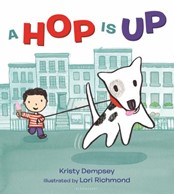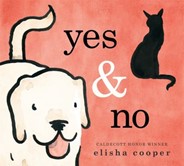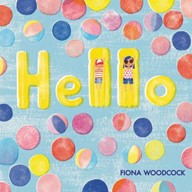You’ve heard of Opposite Day, right? One day where the sky is green and the grass is blue, socks on hands and mittens on feet instead of shoes? Well, I am here to tell you that Opposite Day should be every day! I will tell you why. Teaching concepts, like opposites, to early readers is not difficult when there are plenty of great picture books that help relay the information in a format they can understand. Talking with young children about opposites improves their background knowledge of every day opposites in their life (shirt goes over your head and a toy rolled under the crib), but also encourages thinking skills! Below are a few titles that I have enjoyed reading with my little one at home and have used before during storytimes:
“A Hop is Up” by Kristy Dempsey shows readers the opposites that a boy and his dog come across as they walk around his neighborhood. Encourage your child to point out opposites they notice during a walk you go on around your neighborhood. If you have an infant at home, talking to them about opposites you notice on the walk helps build their vocabulary, even if they cannot respond yet! Young readers can begin to understand what differences are with the simple sentences and illustrations that “A Hop is Up” offers.
“Yes and No” by Elisha Cooper invites readers to follow a cat and a dog for a day and notice the opposites in their interests and routines. While the dog wants to play and go outside during the day, the cat prefers to enjoy the outdoors during the nighttime. However, children will notice that even if the dog and cat enjoy doing things during opposite times of the day, the activities they both enjoy are similar. Sometimes even the best things can happen when done together.
“Hello” by Fiona Woodcock is an entertaining read from beginning to end! Although this book does not have as many opposites as other books mentioned, it is a delightful read about siblings spending the day at a beachside amusement park. You can use this book to talk with your child or children about differences not mentioned in the book but are still there. For example, one page depicts the ocean is chilly but you could encourage your child to think what is warm in this story? I bet the sand or the boardwalk would be warm on their feet!
Last but not least, books that contain photographs of real life objects and children, like this Rookie Toddler book on opposites, is always a wise choice when reading to babies and toddlers. They love looking at other babies and toddlers and it could make for a great bonding experience by pointing out similar objects you may have in your home while teaching them opposites.
-Kena Hardin, Children’s Library Associate, Central Library


